Pacific Electric’s P.C.C. Cars
By Matthew W. Nawn
From the final edition of Trolley Talk, No. 220, December 1994. Reprinted with permission. Photos from the PERyhs.org archive except where noted. Photo research and scans by Steve Crise.
By 1939, Pacific Electric Railroad’s once vast interurban system was shrinking. Declining profits had led to bus substitution on many lines. PE converted base services on its Glendale-Burbank line to bus on July 12, 1936, with trolleys running only at peak periods. The new service was very unpopular with riders who filed formal complaints to the California Railroad Commission. So many complaints were heard that in 1939 the Commission forced the PE to restore full time service with new equipment.
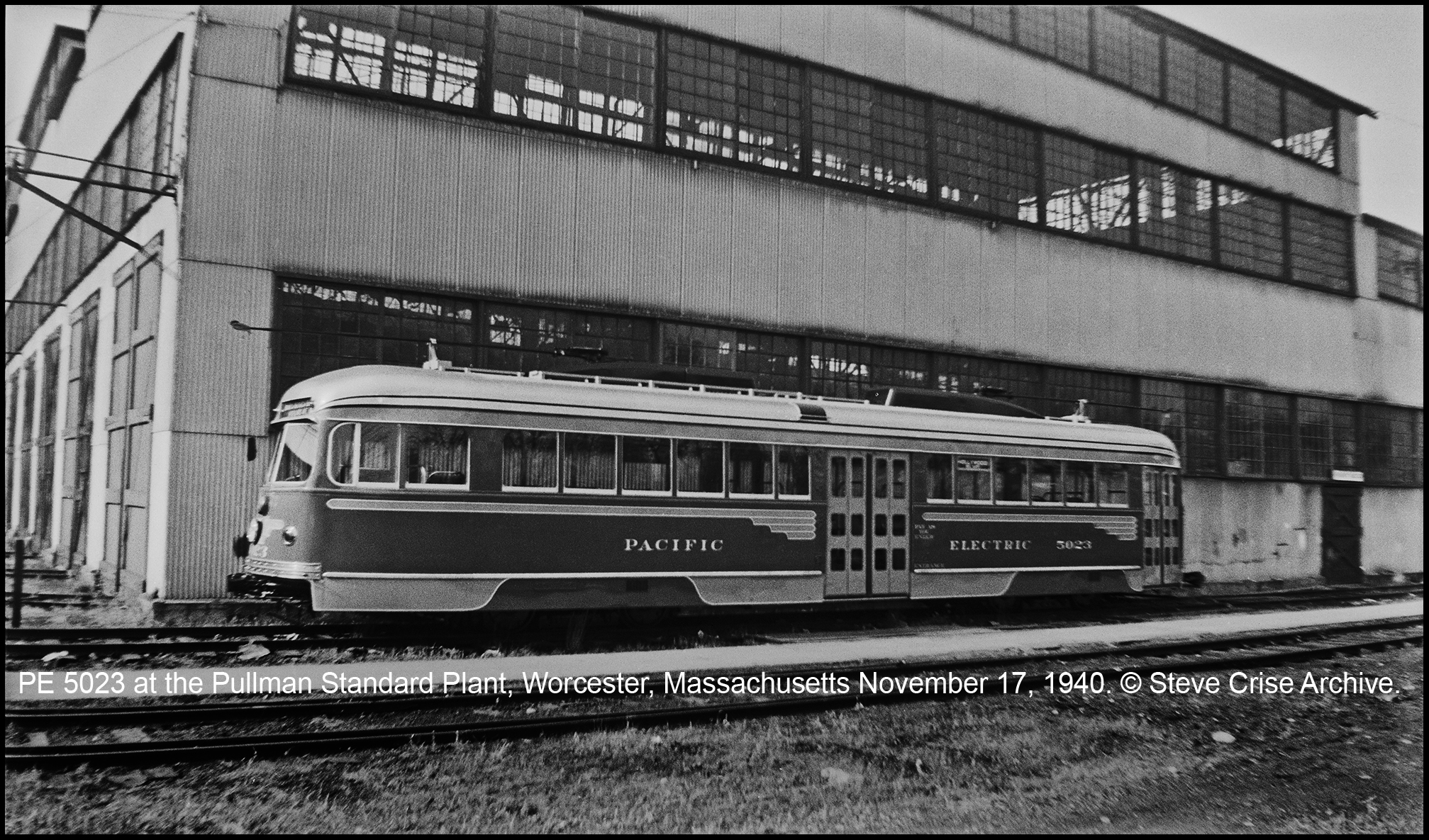
Trackage was rebuilt at a substantial cost. New equipment was ordered in 1939 from the Pullman-Standard Company. The order was for a double-end, multiple design of the PCC (Presidents’ Commission Car) streetcar developed in the early 1930s. The intention was originally for ten cars, but the order was for 20. However, thirty cars were actually delivered in Pullman Standard in order W6624, with 17 cars intended for the Glendale Line and 13 cars to be used on the Venice Short Line.
The new cars were unlike any cars on the PE or any PCC cars constructed previously. Constructed at a cost of $30,000 each, the cars were the first multiple unit PCCs ever built and only the second order for double ended versions. Center doors and other electrical equipment facilitated the need for an extra length car body, resulting in an overall body length of 53’10”. The cars were equipped with Clark B-2 trucks which each contained 2 Westinghouse W1432 motors rated at 55 horsepower each, resulting in an overall horsepower of 220. Control equipment was also furnished by Westinghouse. Balancing speed was 41.5, which was relatively slow but adequate for the long stretches of street running encountered on the Glendale Line. The trucks, unlike those of later PCC interurban designs, had no extra suspension resulting in a somewhat rough ride on open trackage. The cars were among the most luxurious PCC cars ever constructed, with each seating 59 passengers on revolving seats covered with Velmo mohair woven in a distinct pattern. Windows were a lift sash rather than crank operated and contained shades. Each car weight 41,600 lbs. They were numbered 5000- 5029 and painted in a new scheme, red with orange letterboards and skirts and silver trim. The cars were immediately popular with patrons. With their completion the cars were shipped from Pullman-Standard’s Worchester, Mass. facility by rail in early-to-mid 1940 and began replacing Yellow Coach 718 buses on the Glendale line starting November 24, 1940.
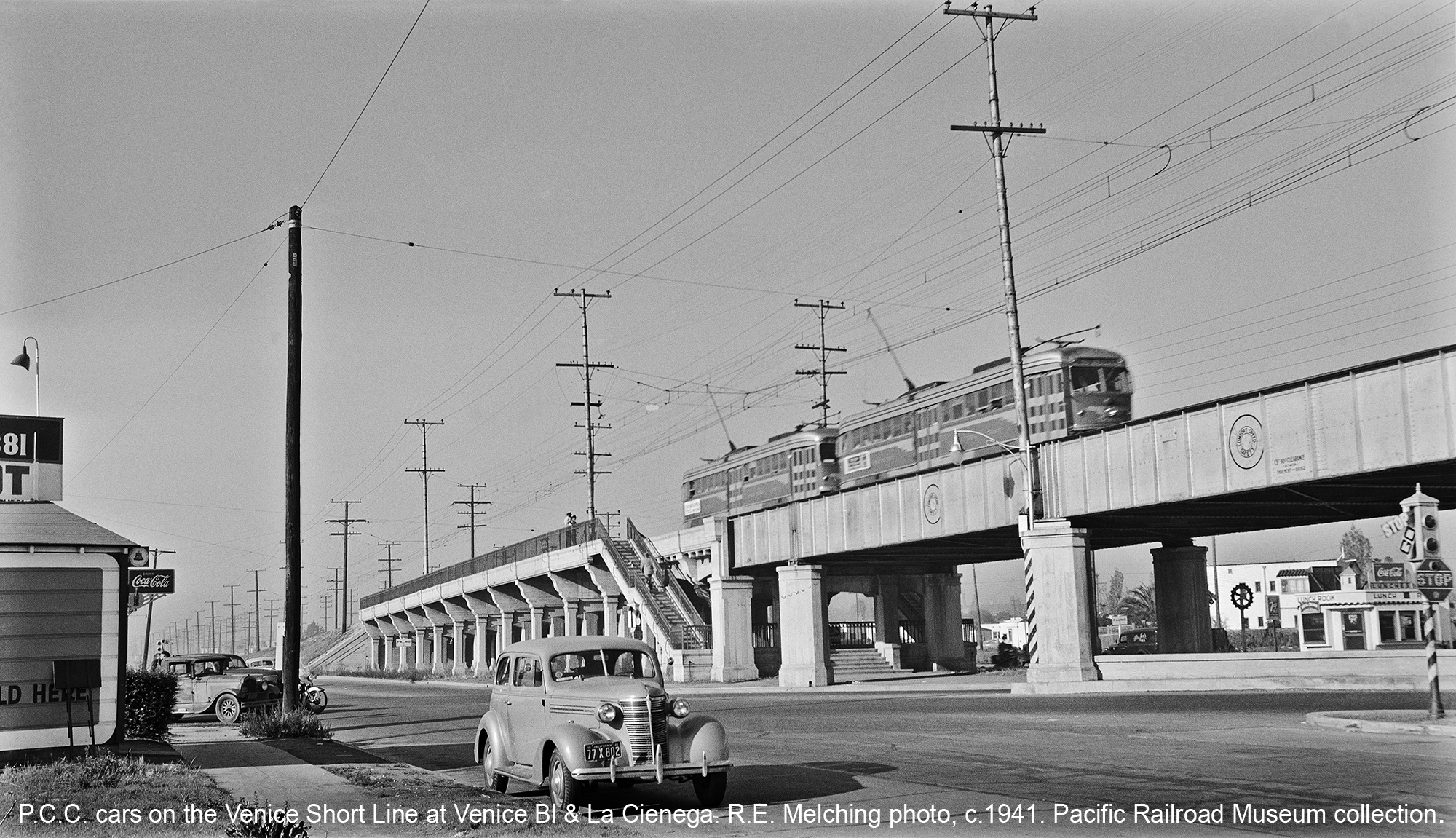
Pacific Electric began operation of the 13 other cars on a combined Venice-Hill St.-Hollywood routing on February 9, 1941. The PCCs on the combined routing were also assigned to the short spur from Vineyard Junction to San Vicente and Olympic Boulevards. The 26 month trial on the combined routing was a failure, as the rough trackage, combined with the rough riding Clark trucks, deemed the cars unsuitable to the service and the 13 PCCs were turned over for operation with the other 17 to Glendale-Burbank. On the Glendale line however, the cars operated fine and were well received by both passengers and crews, who saw the PCCs as a pleasant departure from the previously used wooden relics.
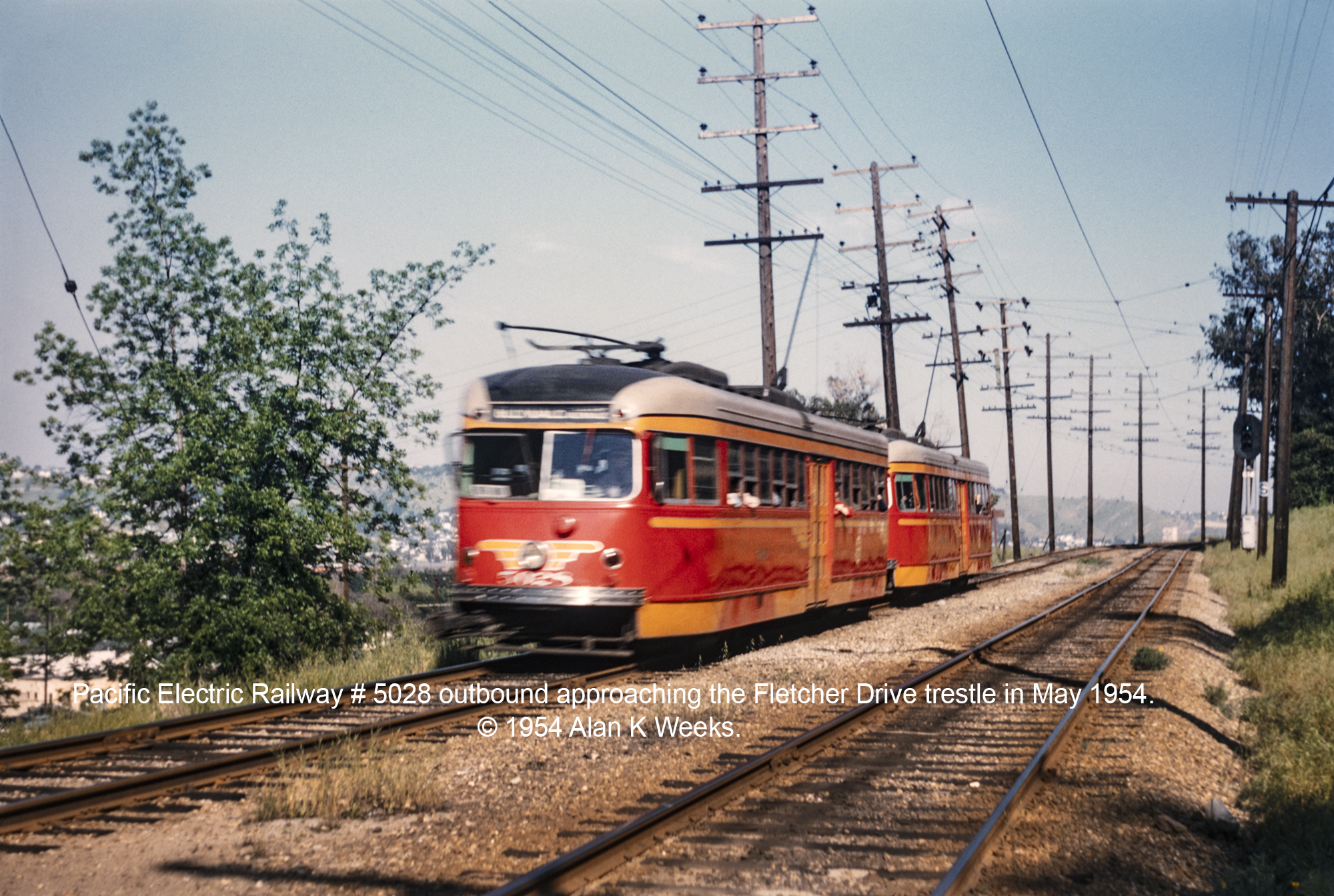
PE’s patronage nearly doubled during World War II. The PCC cars were often seen operating in two and three car trains out of the Subway Terminal at rush hour. Four car trains were tried, but they were beyond the capacity of the braking system. Few alterations were made to the cars during the war. One car, number 5000, was painted in a special scheme and lettered “Fly Navy”. The special decoration lasted the duration of the war and the time immediately following.
By the end of the war, the cars were beginning to reflect the wear inflicted by the extra patronage. Profits declined once again after the war, and buses were again substituted on several lines. Beginning on July 1, 1952, 30 PCC cars and 95 White buses got a much-needed rebuilding. The program outshopped three cars a month. Each car received new floors, doors, and was repainted a simplified scheme. Silver trim stripes were eliminated along with “Pacific Electric” lettering which was replaced by a circular herald.
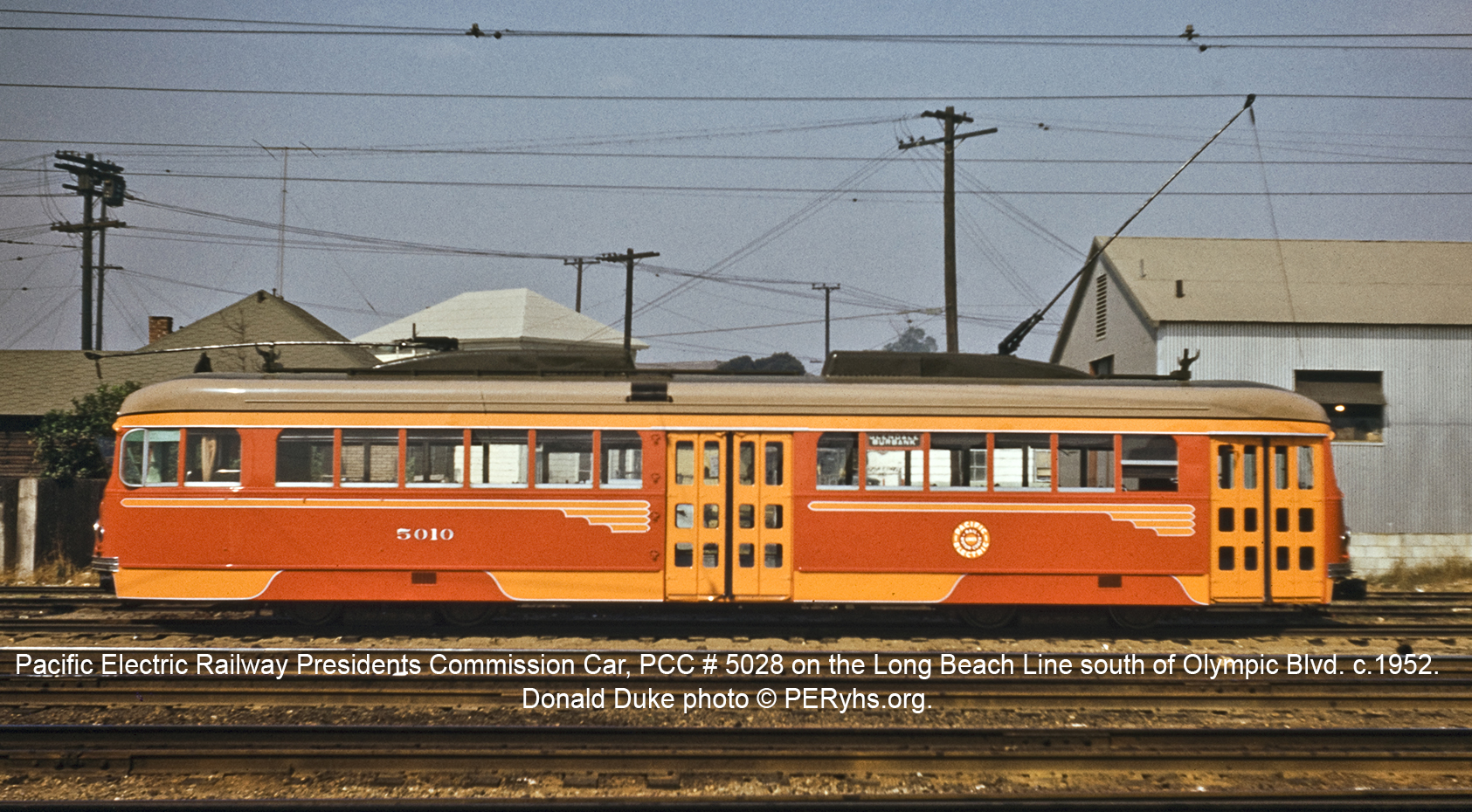
The idea of bus substitution came back to light after the sale of PE passenger operations to Metropolitan Coach Lines on May 18, 1952. Although the sale to Metro also included some trackage and equipment, PE retained ownership of the PCCs and leased them to Metro. Metro immediately announced the possibility of bus substitution on the Glendale Line. Metro was able to gain approval for the conversion from the California Public Utilities Commission, but the Los Angeles Board of Public Utilities and Transportation protested. Metro again appealed to the PUC and finally got the approval of the Los Angeles board. The Glendale- Burbank Line was abandoned on June 19, 1955, despite objections of the Glendale City Council. The PCC cars were replaced by a fleet of 40 General Motors TDH-4801 buses.
Not long after abandonment, the PCC cars were moved from Toluca Yard to the unused subway to facilitate track removal. The cars were placed in indefinite storage in the subway after they were deemed useless on the remaining lines due to their small capacity and poor riding qualities on rough track. No buyer for the cars seemed apparent until the Ferrocaril Nacional General Urquiza Railway of Buenos Aires, Argentina received a purchase option on the cars in 1958. General Urquiza exercised its option and purchased all 30 PCCs in August 1959. The cars were then extricated from the tunnel and shipped from Port of Los Angeles Berth 232 to Buenos Aires. The subway tunnel was finally sealed after the cars were removed.
The cars were the third group of ex-PE cars on General Urquiza, the other types being ex-PE 1100 class and 600 class “Hollywood” cars. The cars were painted in a simplified red scheme but kept their PE wing decorations, lettered F.C. G. U., and numbered in the 1500 series. • The cars were modified with 16 cars having doors cut into one end and 9 cars rebuilt without control equipment and doors in each end. Four cars were not rebuilt and never saw service, and one car became a training car. Only some of the cars retaining control equipment kept a pole for shop movements, as the cars were used in trains and the trucks of the cars were fitted with shoes for third rail operation, thus making the cars the only surface PCC cars equipped for third rail operation.
The PCCs were a failure on the General Urquiza. Four years of storage in the damp Hollywood Subway virtually ruined the electrical equipment and interior fittings of the cars. Several cars even had stalactites forming on them when they were removed! Their overall poor condition, combined with General Urquiza’s rough track which made for horrible riding qualities; resulted in cracking of the truck frames, major structural deficiencies, and other problems. All of the PCCs were out of service by the end of 1962. They were replaced by ex-Key System articulated units. All 30 were supposedly scrapped during 1960-62, although one or more carbodies may remain somewhere in Argentina in use as buildings or storage sheds.
Pacific Electric’s PCC cars were one of the last attempts by the company to regain ridership lost to the private automobile. The true potential of these cars was never realized. They spent only 15 years of service in Southern California before being transferred into storage and then to a Latin American property where they were ill-suited to the tasks demanded of them. It is sad to think that no one had the insight to preserve at least one of these distinctive and unique cars for posterity.
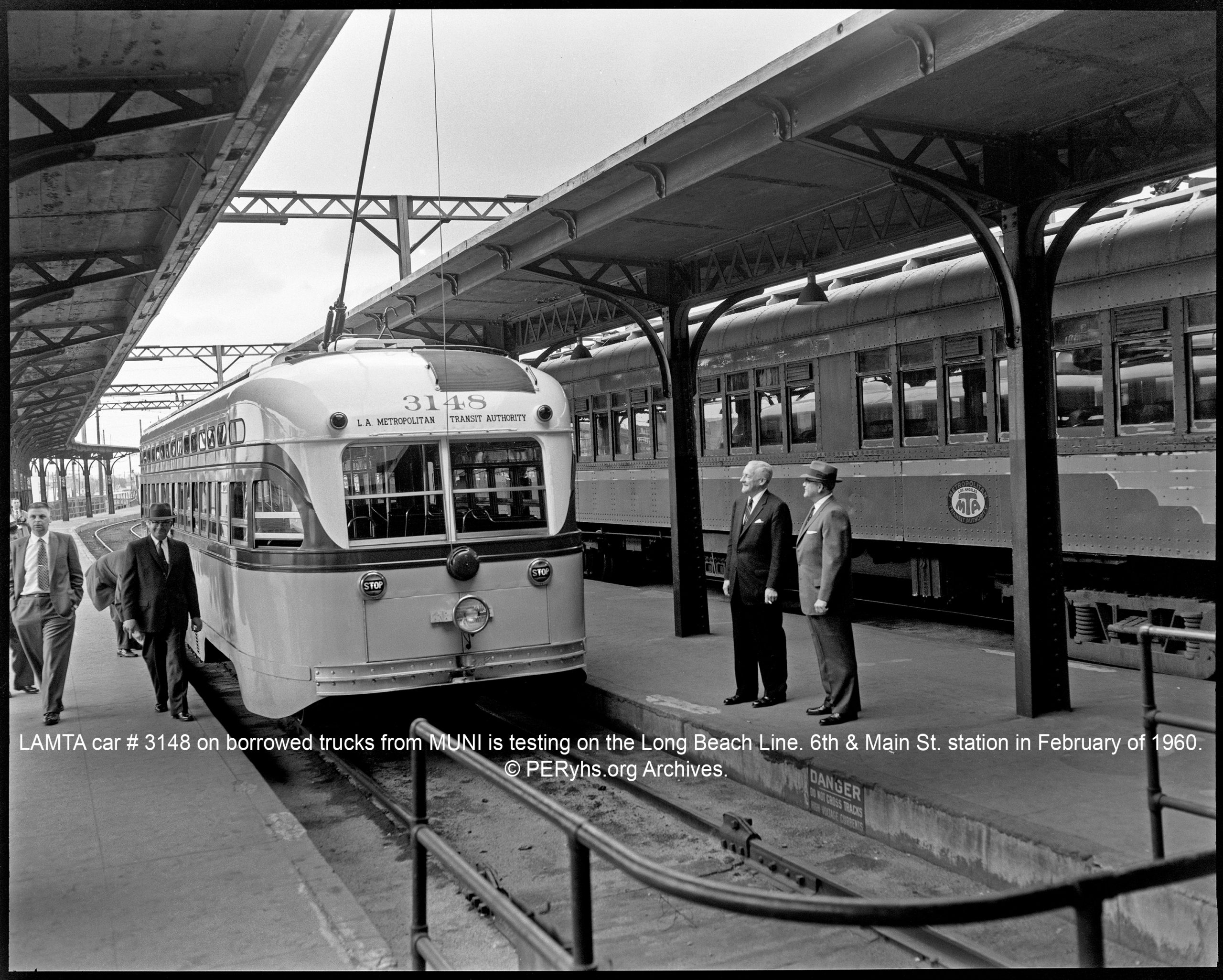
It should be noted that one other PCC also ran over the Pacific Electric’s rails. In 1960, Los Angeles Metropolitan Transit Authority, successor to both the Metropolitan Coach Lines and the Los Angeles Transit Lines was looking to PCC cars as a possible replacement for older cars on the Long Beach Line. The LAMTA took narrow gauge PCC car 3148 and equipped it with trucks borrowed from San Francisco MUNI car 1024. The car was equipped with an extra long trolley pole, the shrouding around the trolley pole was modified, and the car was equipped with a backup light and an automobile horn, all this to facilitate the twenty-mile trips where the car would have to run backwards. The tests began February 16, 1960, and
6 complete round trips were made before the tests were deemed unsuccessful due to poor riding qualities. The tests ended March 7, 1960, the trucks returned to San Francisco, and the car lost its modifications and returned to service with her narrow gauge sisters. The car remained unchanged until the end of streetcar service and its sale to Egypt along with many of her sisters. Had the tests been successful, LAM TA would have purchased either the Illinois Terminal or Johnstown PCCs, both of which were on the market at that time.
Before closing, the author wishes to express his sincere gratitude to Andy Maginnis and Bill Everett, who helped with the research of this article and inspired the author to finally document the history of these often forgotten cars.
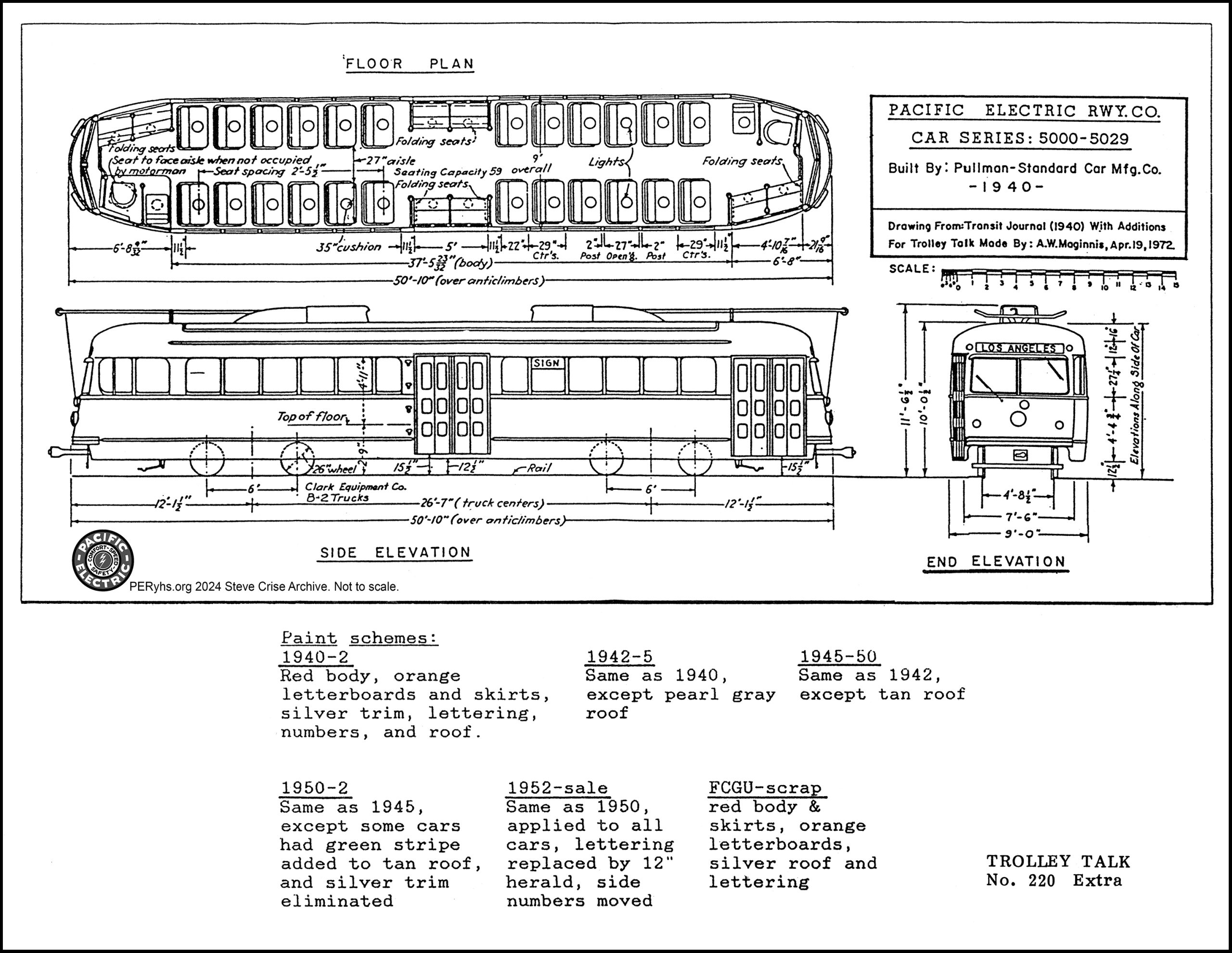
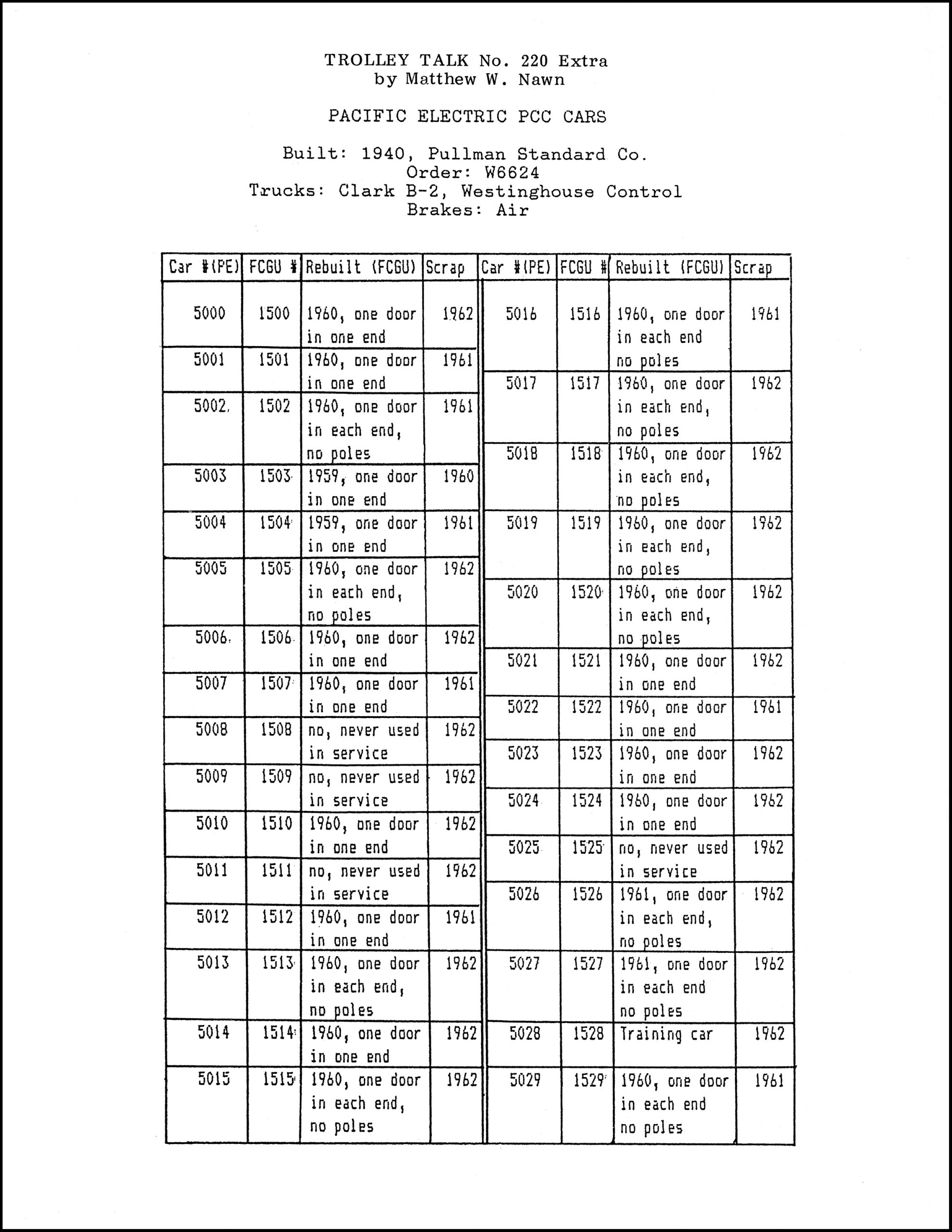
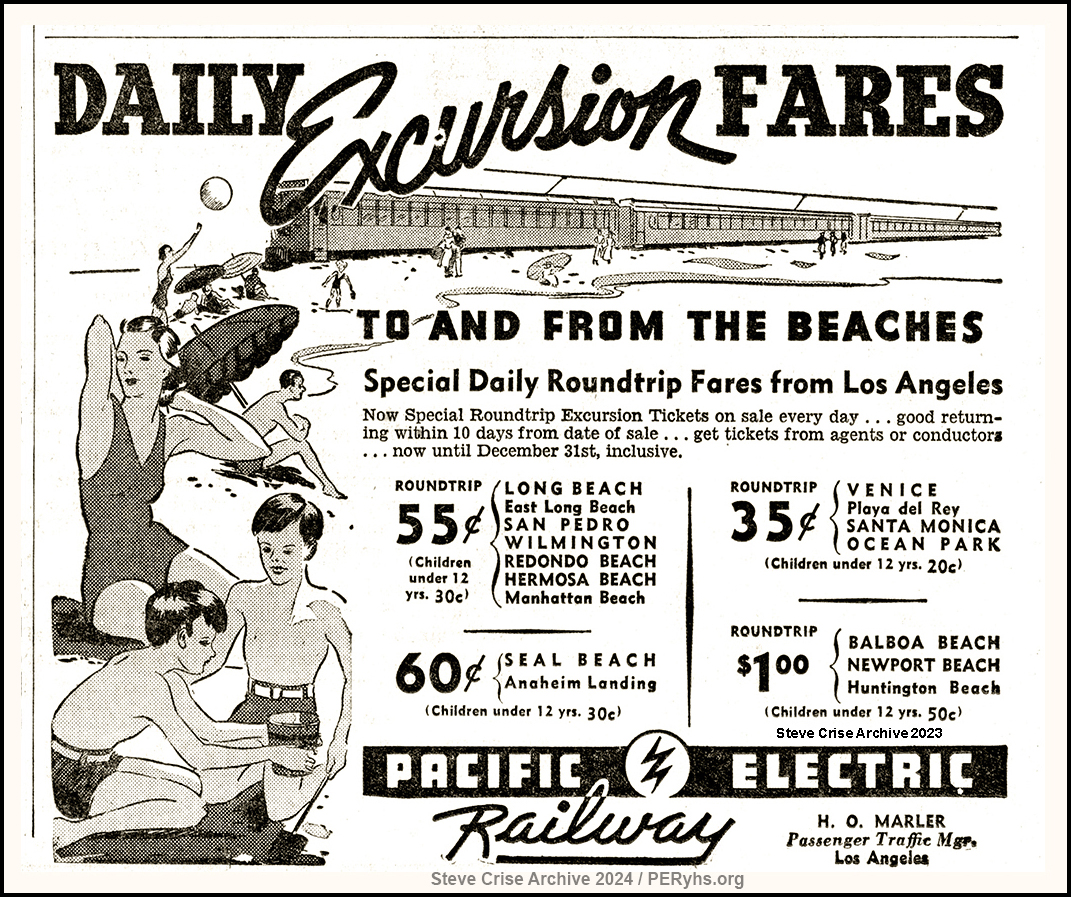




The Pacific Electric double-end PCC cars quite beautiful. A their colorful PE livery is stunning!
The Pacific Electric double-end PCC cars are quite beautiful. And their colorful PE livery is stunning
The PCC was the President’s Conference Car (not Commission).
A correction to my previous comment: PCC stands for Presidents’ Conference Committee, the group which formulated the PCC design standard.